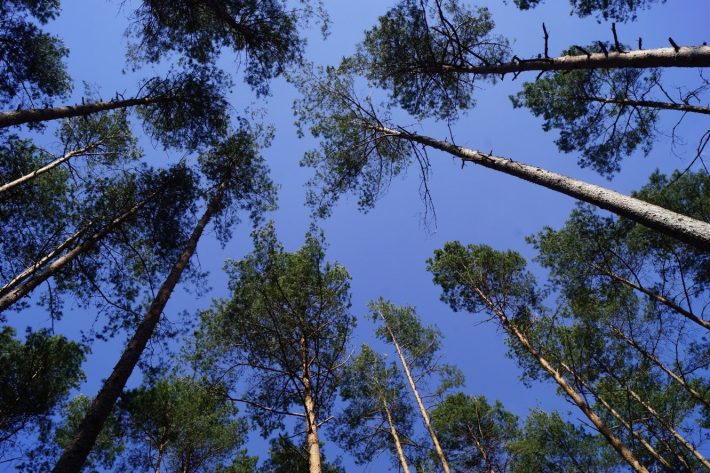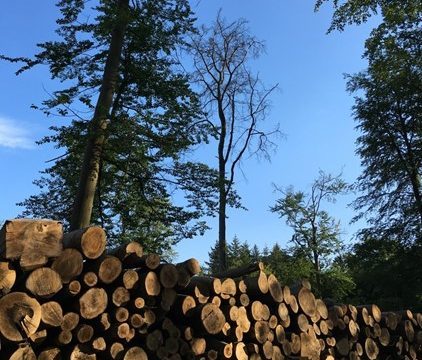Forestry contributed to forest warming during extreme summers in Northern Germany
In a study published in the journal Ecological Solutions and Evidence by researchers from Leuphana University in Lueneburg, Free University of Berlin, and Eberswalde University for Sustainable Development (EUSD) show that forestry use has a significant influence on the cooling capacity of forests and thus on their sensitivity to climate change.

Forest ecosystems influence climate on global and local scales. One important feature of forests is the regulation of ecosystem microclimate. Shading by trees, evaporation of water, storage of heat in biomass, and energy conversion through photosynthesis cause forests to cool themselves and their surroundings during hot weather. This can prevent damaging maximum temperatures, especially during prolonged heat waves.
The scientist responsible for the study, Jeanette Blumröder, EUSD, states, “Increased logging and a correspondingly greater opening of the canopy drive up the maximum temperatures in the forest. This also increases the vulnerability of forests to climate change.
“The extensive series of measurements in beech forests and pine forests in northern Germany from the heat summers of 2018 and 2019 confirm very concretely the fears that emerged from previous studies.
“When the canopy is opened by 10%, average maximum temperatures increase by about half a degree Celsius. Pine forests show below average cooling capacity once the canopy is less than 82 % closed.”

In biomass-poor pine plantations (177 m3 per hectare), the average maximum temperature was 9°C higher than in relatively biomass-rich beech forests (> 565 m3 per hectare). When pine plantations alone are considered, a significant influence of use intensity is also evident: during the hottest day in 2019, the difference in peak temperatures between those with a relatively dense canopy (72 %) and those with a particularly open one (46 %) was more than 13°C.
Project leader Prof. Dr. Pierre Ibisch summarizes, “The conclusion is that forest managers therefore have some control in climate change over how much the forests entrusted to them heat up and are potentially damaged as a result. Higher biomass stocks and a closed canopy are insurance against extreme weather.”
The paper also critically discusses and casts doubt on previously common silvicultural recommendations to promote forest thinning. Water losses and the risk of heat damage increase with thinning. The authors recommend to keep the canopy as closed as possible (at least 80 %) and to use the forests accordingly cautiously.
In addition, they confirm the well-known demand to develop the simply structured conifer monocultures into structurally rich mixed deciduous forests as quickly as possible. Forest managers should live up to their outstanding responsibility for landscape temperature management in climate change.
You can read the article in full for free here:
Blumroeder, Jeanette S., Felix May, Werner Härdtle, and Pierre L. Ibisch (2021) Forestry contributed to warming of forest ecosystems in northern Germany during the extreme summers of 2018 and 2019. Ecological Solutions and Evidence. DOI 10.1002/2688-8319.12087. Link to the article and the journal: https://besjournals.onlinelibrary.wiley.com/doi/10.1002/2688-8319.12087
Like what we stand for?
Support our mission and help develop the next generation of ecologists by donating to the British Ecological Society.